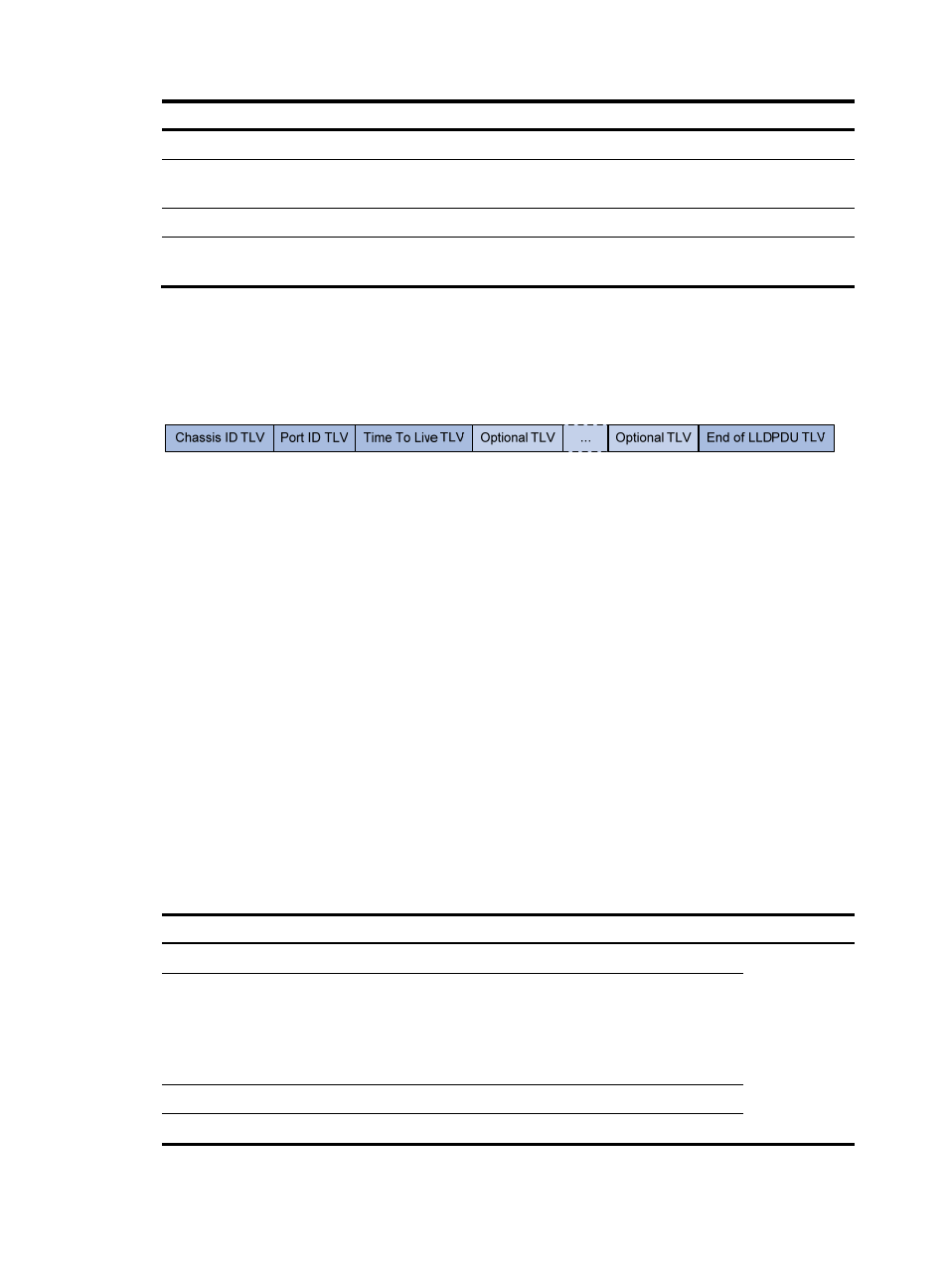Lldpdus, Tlvs – H3C Technologies H3C WX3000E Series Wireless Switches User Manual
Page 141

132
Field Description
Source MAC address
The MAC address of the sending port.
Type
The SNAP type for the upper layer protocol. It is 0xAAAA-0300-0000-88CC
for LLDP.
Data LLDPDU
FCS
Frame check sequence, a 32-bit CRC value used to determine the validity of
the received Ethernet frame.
LLDPDUs
LLDP uses LLDPDUs to exchange information. An LLDPDU comprises multiple TLV sequences. Each carries
a specific type of device information, as shown in
Figure 42 LLDPDU encapsulation format
An LLDPDU can carry up to 28 types of TLVs. Mandatory TLVs include Chassis ID TLV, Port ID TLV, Time
To Live TLV, and End of LLDPDU TLV. Other TLVs are optional.
TLVs
TLVs are type, length, and value sequences that carry information elements. The type field identifies the
type of information, the length field measures the length of the information field in octets, and the value
field contains the information itself.
LLDPDU TLVs fall into the following categories:
•
Basic management TLVs
•
Organizationally (IEEE 802.1 and IEEE 802.3) specific TLVs
•
LLDP-MED (media endpoint discovery) TLVs
Basic management TLVs are essential to device management. Organizationally specific TLVs and
LLDP-MED TLVs are used for enhanced device management; they are defined by standardization or other
organizations and are optional to LLDPDUs.
1.
Basic management TLVs
lists the basic management TLV types. Some of them must be included in every LLDPDU.
Table 22 Basic LLDP TLVs
Type Description
Remarks
Chassis ID
Bridge MAC address of the sending device
Mandatory
Port ID
ID of the sending port
If the LLDPDU carries LLDP-MED TLVs, the port ID TLV carries the
MAC address of the sending port or the bridge MAC in case the
port does not have a MAC address. If the LLDPDU carries no
LLDP-MED TLVs, the port ID TLV carries the port name.
Time To Live
Life of the transmitted information on the receiving device
End of LLDPDU
Marks the end of the TLV sequence in the LLDPDU
